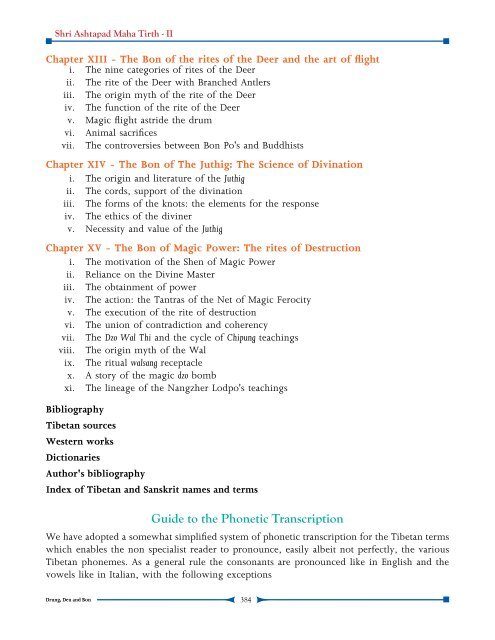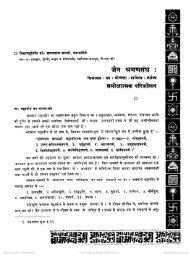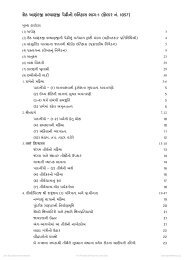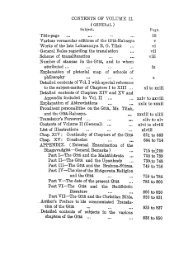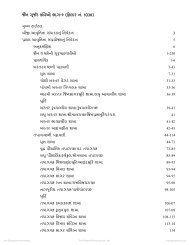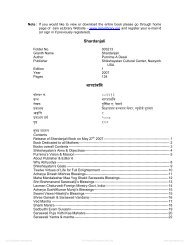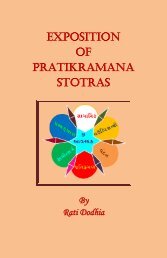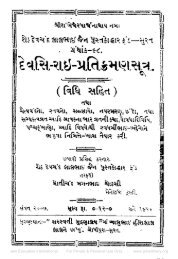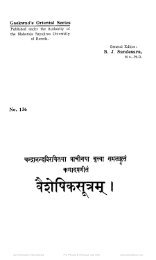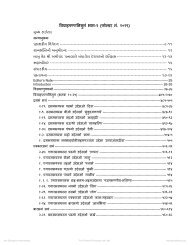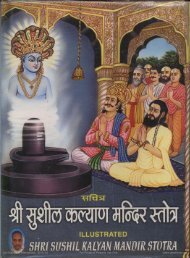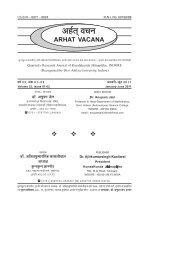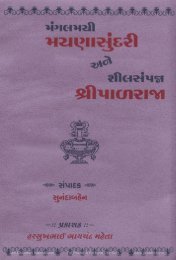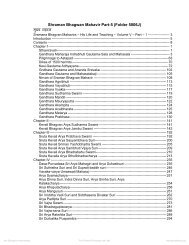Chapter - 08 Bon Po Religion - Jain Library
Chapter - 08 Bon Po Religion - Jain Library
Chapter - 08 Bon Po Religion - Jain Library
You also want an ePaper? Increase the reach of your titles
YUMPU automatically turns print PDFs into web optimized ePapers that Google loves.
Shri Ashtapad Maha Tirth - II<br />
<strong>Chapter</strong> XIII - The <strong>Bon</strong> of the rites of the Deer and the art of flight<br />
i. The nine categories of rites of the Deer<br />
ii. The rite of the Deer with Branched Antlers<br />
iii. The origin myth of the rite of the Deer<br />
iv. The function of the rite of the Deer<br />
v. Magic flight astride the drum<br />
vi. Animal sacrifices<br />
vii. The controversies between <strong>Bon</strong> <strong>Po</strong>'s and Buddhists<br />
<strong>Chapter</strong> XIV - The <strong>Bon</strong> of The Juthig: The Science of Divination<br />
i. The origin and literature of the Juthig<br />
ii. The cords, support of the divination<br />
iii. The forms of the knots: the elements for the response<br />
iv. The ethics of the diviner<br />
v. Necessity and value of the Juthig<br />
<strong>Chapter</strong> XV - The <strong>Bon</strong> of Magic <strong>Po</strong>wer: The rites of Destruction<br />
i. The motivation of the Shen of Magic <strong>Po</strong>wer<br />
ii. Reliance on the Divine Master<br />
iii. The obtainment of power<br />
iv. The action: the Tantras of the Net of Magic Ferocity<br />
v. The execution of the rite of destruction<br />
vi. The union of contradiction and coherency<br />
vii. The Dzo Wal Thi and the cycle of Chipung teachings<br />
viii. The origin myth of the Wal<br />
ix. The ritual walsang receptacle<br />
x. A story of the magic dzo bomb<br />
xi. The lineage of the Nangzher Lodpo's teachings<br />
Bibliography<br />
Tibetan sources<br />
Western works<br />
Dictionaries<br />
Author's bibliography<br />
Index of Tibetan and Sanskrit names and terms<br />
Guide to the Phonetic Transcription<br />
We have adopted a somewhat simplified system of phonetic transcrip tion for the Tibetan terms<br />
which enables the non specialist reader to pro nounce, easily albeit not perfectly, the various<br />
Tibetan phonemes. As a general rule the consonants are pronounced like in English and the<br />
vowels like in Italian, with the following exceptions<br />
Drung, Deu and <strong>Bon</strong><br />
384


